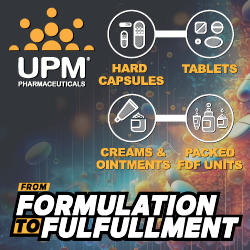Asia-Pacific’s Glioblastoma Multiforme Treatment Market Value to More Than Double by 2020
Asia-Pacific’s Glioblastoma Multiforme Treatment Market Value to More Than Double by 2020
The Glioblastoma Multiforme (GBM) therapeutics market in Asia-Pacific (APAC) will more than double in value, from $49.4 million in 2013 to $105.8 million by 2020, at a Compound Annual Growth Rate (CAGR) of 11.5%, says a new report from business intelligence provider GBI Research.
The company’s latest report, Glioblastoma Multiforme Therapeutics in Asia-Pacific Markets to 2020 – Novel Therapeutic Approaches Target High Unmet Need in Newly Diagnosed and Recurrent GBM, states that this impressive growth will result from the anticipated approval and market entries of Rindopepimut, Cotara, and Avastin in some APAC countries during the forecast period.
Vijaya Vulapalli, Senior Analyst for GBI Research, says “The APAC region boasts a strong GBM pipeline, which also includes carmustine implants, currently being developed in China. Novel therapies Rindopepimut and Cotara in particular could have a significant bearing on APAC’s GBM treatment landscape. Phase II clinical studies of Rindopepimut demonstrated a relatively high median Overall Survival (OS) rate among patients. Meanwhile, Cotara’s Phase II studies showed similar OS to Avastin, with slightly more progression-free survival improvement in recurrent GBM. As a single-infusion therapy, Cotara is likely to become an effective second-line treatment option for patients.”
However, GBI Research states that even if these therapies prove successful in late-stage clinical trials, they will experience low uptake in their respective markets due to their high prices and lack of patient access to medicines, mainly in China and India. Furthermore, APAC’s GBM treatment space is still expected to require new drugs with better efficacy and improved prognosis.
Vulapalli continues, “One of the key reasons for the lack of efficacy exhibited by most therapies is their inability to penetrate the blood–brain barrier, and an urgent unmet need will remain over the forecast period for drugs that can achieve this. Efficacy also remains low because therapeutic resistance develops due to the disease heterogeneity, which is believed to be increased by genetic variations arising from mutations. A combined therapy that acts on multiple tumor signaling pathways, rather than a single molecular target, may therefore be more effective and result in a better prognosis.”
This report provides in-depth analysis of the Glioblastoma Multiforme (GBM) therapeutics market within the Asia-Pacific region, covering Australia, China, India and Japan. It provides estimates of market size for 2013, along with market forecasts until 2020. The report covers disease epidemiology, treatment algorithms and patterns, and in-depth analysis of the marketed and pipeline GBM products. This report was built using data and information sourced from proprietary databases, primary and secondary research, and in-house analysis conducted by GBI Research’s team of industry experts.
GBI Research is a market-leading provider of business intelligence reports, offering actionable data and forecasts based on the insights of key industry leaders to ensure you stay up-to-date with the latest emerging trends in your markets. For more information, please contact our Press Office on +44 (0)1204 543 537 or at pr@gbiresearch.com.
Follow us online for the latest industry updates:
Total Page Views: 1553












